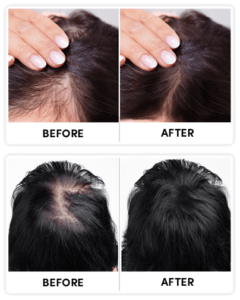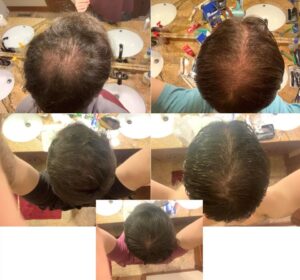Do Hair Transplants STOP HAIR LOSS? A Comprehensive Guide for the Curious

Getting to Grips with Hair Transplants
Losing hair can be a tough pill to swallow, often leaving folks feeling down and out about their appearance. If you're on the hunt for a fix, hair transplants might just pop up on your radar as a promising solution. But the million-dollar question is: can they actually put a stop to hair loss? This guide is here to break it all down for you, exploring both the magic and the limits of hair transplants. Whether you're just curious or seriously considering taking the plunge, we're here to help you make an informed choice.
Getting the Lowdown on Hair Transplants
Simply put, a hair transplant is a surgical procedure that moves hair from one part of your body, usually the back or sides of your head, to the areas where you're seeing more scalp than you'd like. This method has come a long way since it first hit the scene, now offering results that look pretty darn natural with not much recovery time. Knowing the nuts and bolts can help clear up any confusion, giving you a better idea of what's in store.
The Nitty-Gritty of Hair Transplants
The science behind hair transplants is quite the marvel. It involves carefully plucking hair follicles from the donor area and then skillfully planting them in the thinning spots. The success of these procedures hinges on these grafts taking root and thriving in their new home. Thanks to modern techniques, many folks walk away with results they're thrilled with.
Why Go for a Hair Transplant?
The reasons people decide to go for hair transplants are as diverse as the people themselves. Some are looking to boost their confidence and feel more at ease in their own skin, while others are chasing a certain look. Whatever the reason, hair transplants offer a way to tackle hair loss woes that can hit self-esteem and quality of life hard.
Can Hair Transplants Halt Hair Loss?
So, do hair transplants actually stop hair loss? Well, not quite. They don't stop hair loss in its tracks, but they do help with the fallout. Transplants move existing hair around but don't stop new hair loss in untreated spots. Still, for many, this is enough to make a noticeable difference in their hair's appearance.
The Mechanics of Hair Transplants
Hair transplants work their magic by shifting hair from where it's plentiful to where it's sparse. This is done with precise surgical maneuvers that make sure the new hair blends right in with what you've got. While it doesn't change your genetic predisposition to hair loss, it can certainly create the illusion of a fuller head of hair.
The Importance of Donor Hair
The donor hair is the backbone of a successful hair transplant. Typically, the best donor hair is snagged from the back and sides of the head—areas less likely to lose hair. The strength of these follicles makes them perfect for the job. But it's crucial to have enough donor hair to cover the bald spots without leaving the donor area looking patchy.
What Hair Transplants Can't Do
While hair transplants can be a game-changer for many, they're not without their downsides. The procedure won't stop future hair loss, meaning you might need more treatments down the line. Plus, not everyone is a good candidate; factors like how much hair loss you're dealing with and the quality of your donor hair are key. A detailed chat with a specialist is a must to figure all this out.
Watch Your Hair Come Back FASTER Than You EVER Dreamed Possible

WITHOUT Expensive Medications, Lasers, or Painful Surgeries!
Watch nowDifferent Types of Hair Transplant Procedures
When pondering a hair transplant, it's good to know the different methods out there. This info can help you make a call on what's the best fit for your situation.
Follicular Unit Transplantation (FUT)
Follicular Unit Transplantation (FUT) is the old-school method where a strip of skin is taken from the donor area and split into individual follicular units for transplanting. It can yield a lot of grafts in one go, but it does leave a line scar where the strip was taken.
Follicular Unit Extraction (FUE)
Follicular Unit Extraction (FUE) is a newer technique that involves pulling individual follicles straight from the donor area. It's less invasive and doesn't leave a line scar, which makes it a favorite for many. However, FUE can take more time and might need a few rounds to get the desired look.
FUT vs. FUE: The Showdown
Choosing between FUT and FUE often boils down to personal preference, how much hair loss you have, and your surgeon's advice. FUT might be better if you need a lot of grafts, while FUE offers a scar-free route for those wanting a less invasive option. Each has its perks and downsides, and a detailed consult will help you find your best match.
How Effective Are Hair Transplants?
The success of hair transplants can hinge on a variety of factors, and knowing these can set you up for realistic expectations and a successful outcome.
How Successful Are Hair Transplants?
Generally, hair transplants have a pretty high success rate, with most folks being happy with the results. Success largely depends on the surgeon's skill and the quality of the donor hair. When done by a seasoned pro, hair transplants can offer a natural and lasting fix for hair loss.
What Affects Hair Transplant Results?
Several elements can sway how well a hair transplant turns out. These include your age, how much hair you've lost, the quality of your donor hair, and your overall health. Sticking to post-surgery care instructions is also crucial for a successful outcome. Those who follow the aftercare advice tend to see better results.
Thinking Long Term with Hair Transplants
While hair transplants can deliver long-lasting results, it's wise to think about the potential need for future procedures. As hair loss carries on, more transplants might be needed to keep up appearances. Regular check-ins with your surgeon can help keep an eye on things and tackle any issues that crop up over time.
Why The Ancient Samurai Warriors Never Lost Their Hair…

guaranteed to work for any men or women out there...
Watch free special videoLooking at Alternatives to Hair Transplants
If surgery isn't on your agenda, there are other avenues to explore. These include meds, non-surgical options, and lifestyle tweaks that can help manage hair loss.
Hair Loss Medications
Medications like Minoxidil and Finasteride are common go-tos for tackling hair loss. Minoxidil is a topical solution that can kick-start hair growth, while Finasteride is an oral pill that slows hair loss by blocking the hormone behind male pattern baldness. These treatments can be quite effective, especially when started early on.
Non-surgical Hair Restoration Methods
Non-surgical options include things like platelet-rich plasma (PRP) therapy and laser therapy. PRP involves injecting platelets from your blood into your scalp to boost hair growth, while laser therapy uses light energy to get follicles working again. Both methods have shown promise for some.
Lifestyle Hacks to Combat Hair Loss
Embracing a healthy lifestyle can also help curb hair loss. Eating a balanced diet packed with vitamins and minerals, staying active, and managing stress can support overall hair health. Plus, steering clear of excessive heat styling and harsh chemicals can prevent further damage to thinning hair.
Finding the Right Fit for You
Choosing a hair loss solution takes careful thought and expert advice. It's key to assess your situation and chat with a specialist to explore the best options for you.
Talking to a Hair Loss Expert
Sitting down with a hair loss specialist is a vital first step. They can thoroughly evaluate your condition and suggest the most fitting treatment options. Their expertise will guide you through the decision-making process, ensuring you make a smart choice.
Assessing Your Hair Loss Situation
Understanding the extent and pattern of your hair loss is crucial in picking the right treatment. Factors like age, family history, and lifestyle can play a part in your condition. A deep dive into these aspects will help pinpoint the most effective approach for tackling your hair loss.
The Cost of Hair Transplants
The price tag on hair transplants can vary depending on the method, the scope of the procedure, and where the clinic is located. It's important to think about not just the upfront cost but potential future treatments too. Weighing the costs against the benefits will help you make a financially sound decision.
Top Trichologist: Do This To Your Scalp To Regrow A Full Head Of Hair

Completely natural and dirt cheap way that makes it possible for you to finally regrow all your hair back.
Watch free special videoLooking After Your New Hair
Once you've had a hair transplant, keeping up with the right care and maintenance is key to getting the best outcome. Following the guidelines will help ensure your new hair sticks around for the long haul.
Aftercare Right After the Procedure
Right after your hair transplant, it's crucial to stick to your surgeon's aftercare instructions. This might mean taking it easy on physical activities, holding off on washing your hair for a bit, and keeping your scalp out of direct sunlight. These precautions can help ward off complications and aid healing.
Long-term Hair Care Advice
Looking after your hair long-term involves keeping your scalp and hair in tip-top shape. Regular washing with gentle shampoos, avoiding harsh styling methods, and using hair-friendly products can support the continued health of transplanted hair. Being consistent with these practices can boost the overall results of your transplant.
Keeping Up with Follow-up Visits
Regular check-ups with your hair transplant specialist are important for tracking progress and tackling any concerns. These visits allow for tweaks to your care plan if needed and ensure your hair keeps thriving.
Wrapping It Up: Do Hair Transplants Stop Hair Loss?
To sum it all up, while hair transplants don't put a stop to hair loss completely, they do offer a solid way to redistribute hair and enhance your appearance. They can give a real confidence boost and deliver a satisfying look. Ultimately, deciding on a hair transplant or another treatment should be a choice made with the guidance of a qualified specialist.
Recap of the Main Points
Hair transplants are a surgical fix that moves hair to areas that need it. They don't prevent future hair loss but can effectively tackle existing baldness. Grasping the different types, effectiveness, and alternatives to hair transplants is key in making the right call.
Final Musings on Hair Transplants and Hair Loss
Hair loss is a personal journey, and deciding on a hair transplant is just as individual. By arming yourself with the right info and seeking expert guidance, you can navigate this path with confidence. Whether you opt for a transplant, medication, or lifestyle tweaks, the goal is to find a solution that fits your needs and dreams.






